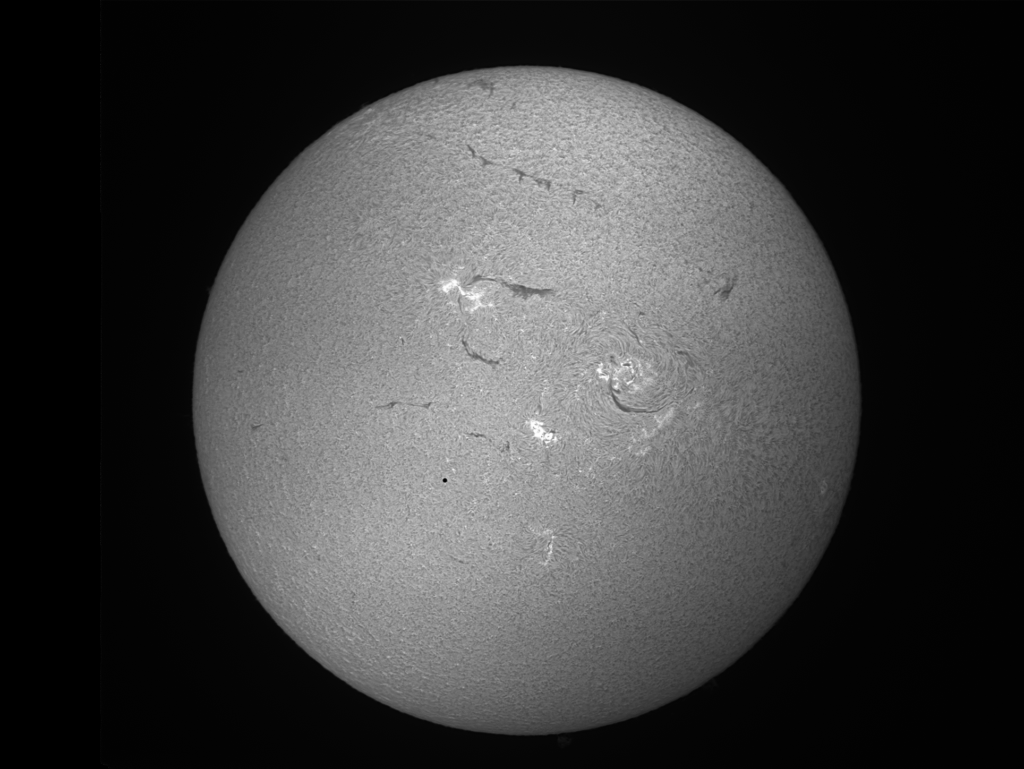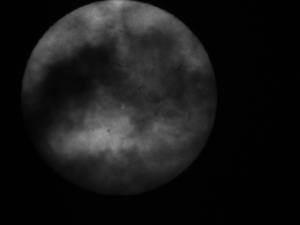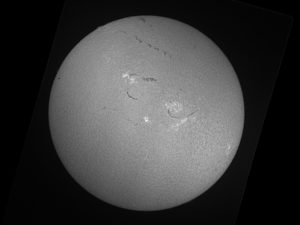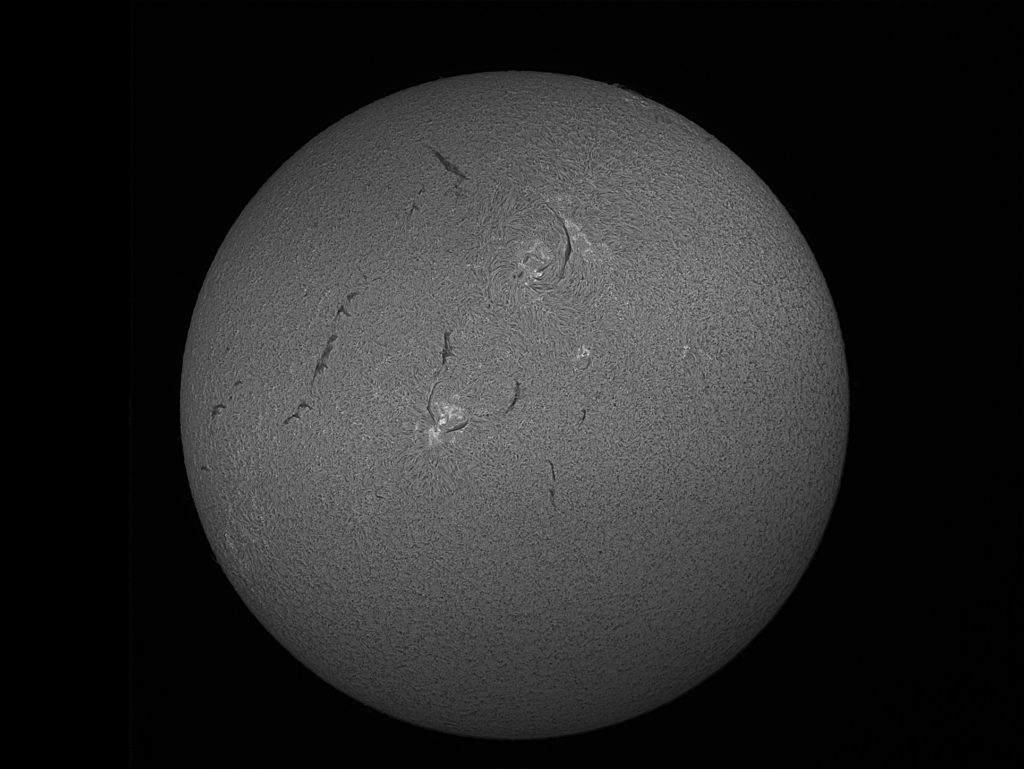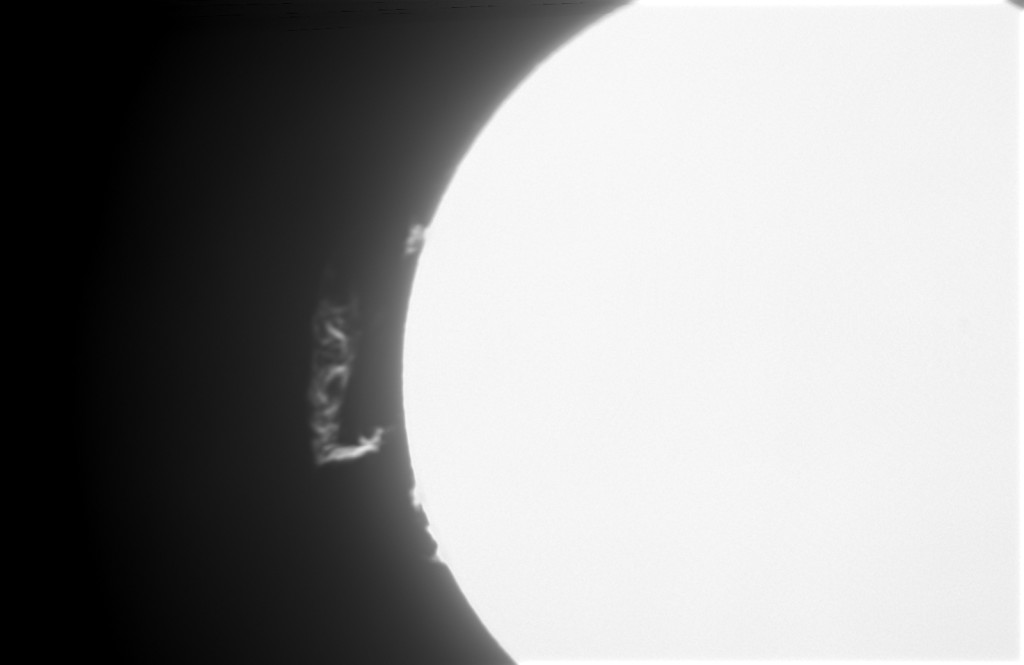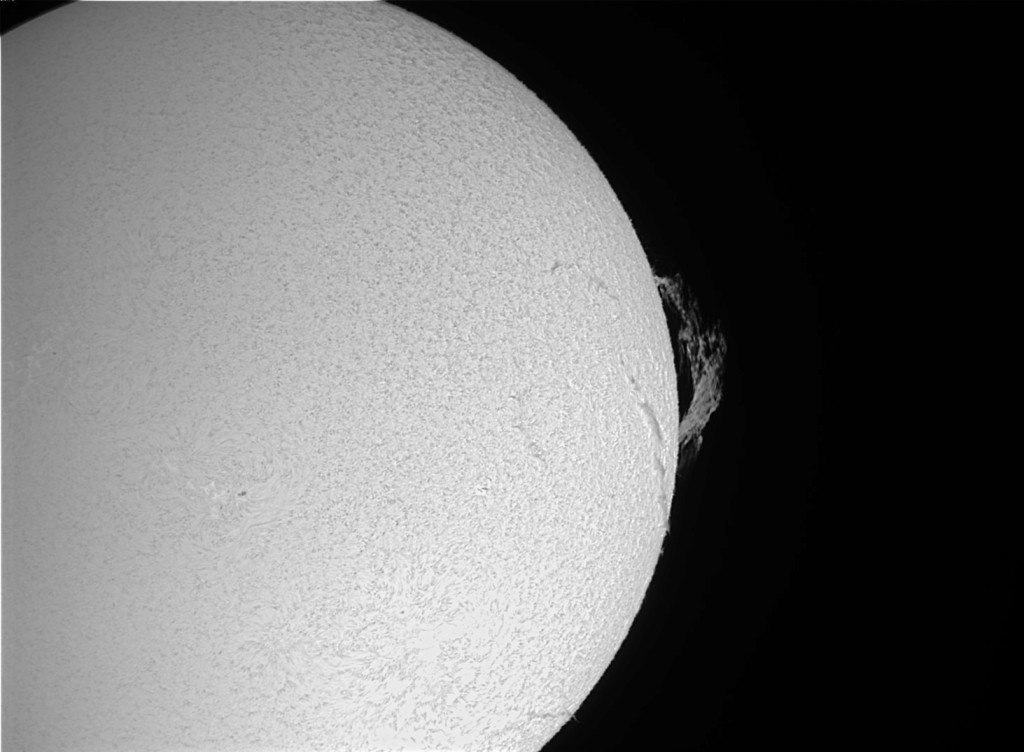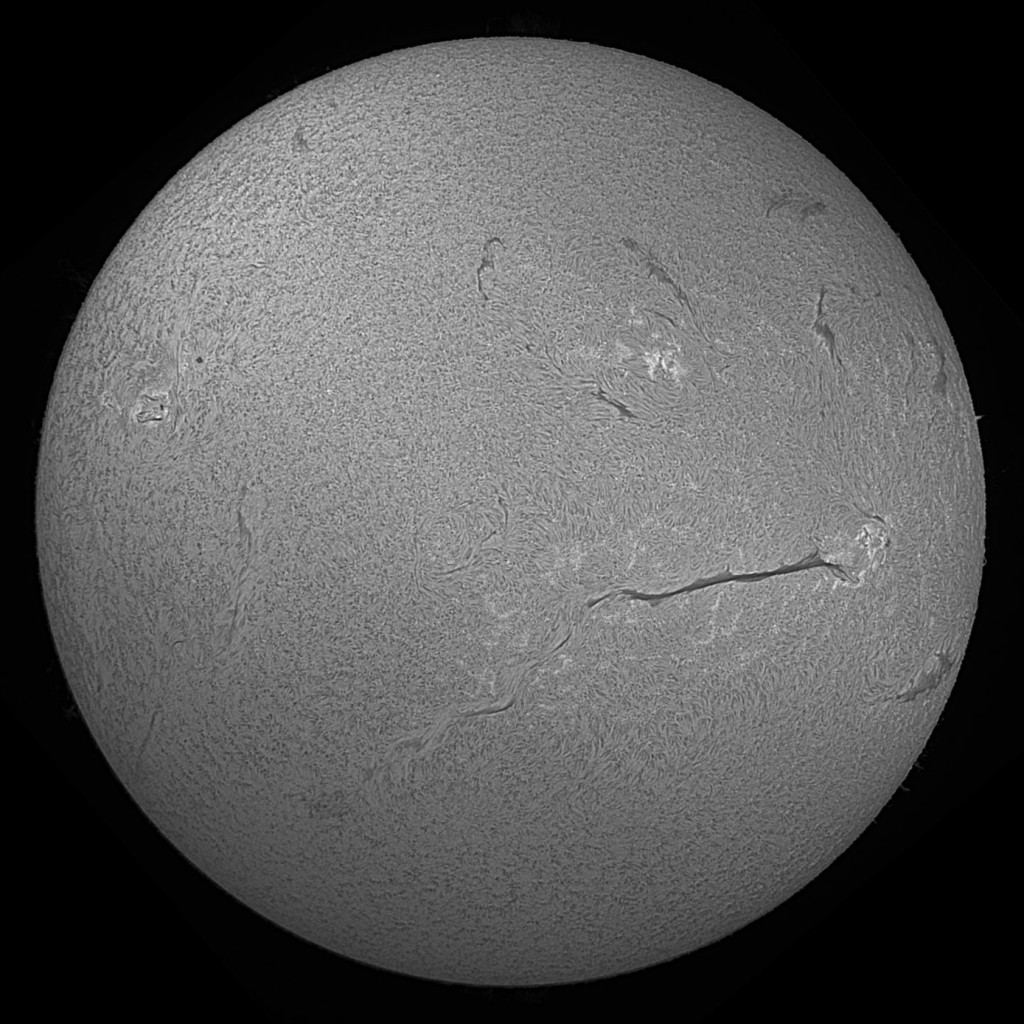Cloud cover on the morning of the 9th prevented me from catching Mercury anywhere near first or second contact during its May 2016 transit. Ultimately, the clouds started to break up about two hours into the transit. I manually started the image capture as holes in the clouds revealed the Sun but once the clouds thinned significantly, I started taking 60 second captures automatically every 5 minutes. Very few of the captures were totally free of clouds, but several had only very thin clouds visibly moving across the field of view. Unfortunately, clouds moved back in during the last 10-15 minutes of the transit preventing any images near third or fourth contact as the planet left the solar disk
This image was taken at 1011(L) just 14 minutes after mid-transit. It is the best 178 frames (20%) of the 60 second capture. The image was taken through my double stacked 60mm Hydrogen-Alpha telescope using a Point Grey Flea 3 machine vision camera.
Mercury is the perfectly round black spot just below and left of the center of the solar disk. Other features visible are filaments (dark streaks) and plages (bright areas).
I am still working on additional images with the intent of making a composite showing the movement of Mercury across the Sun.
